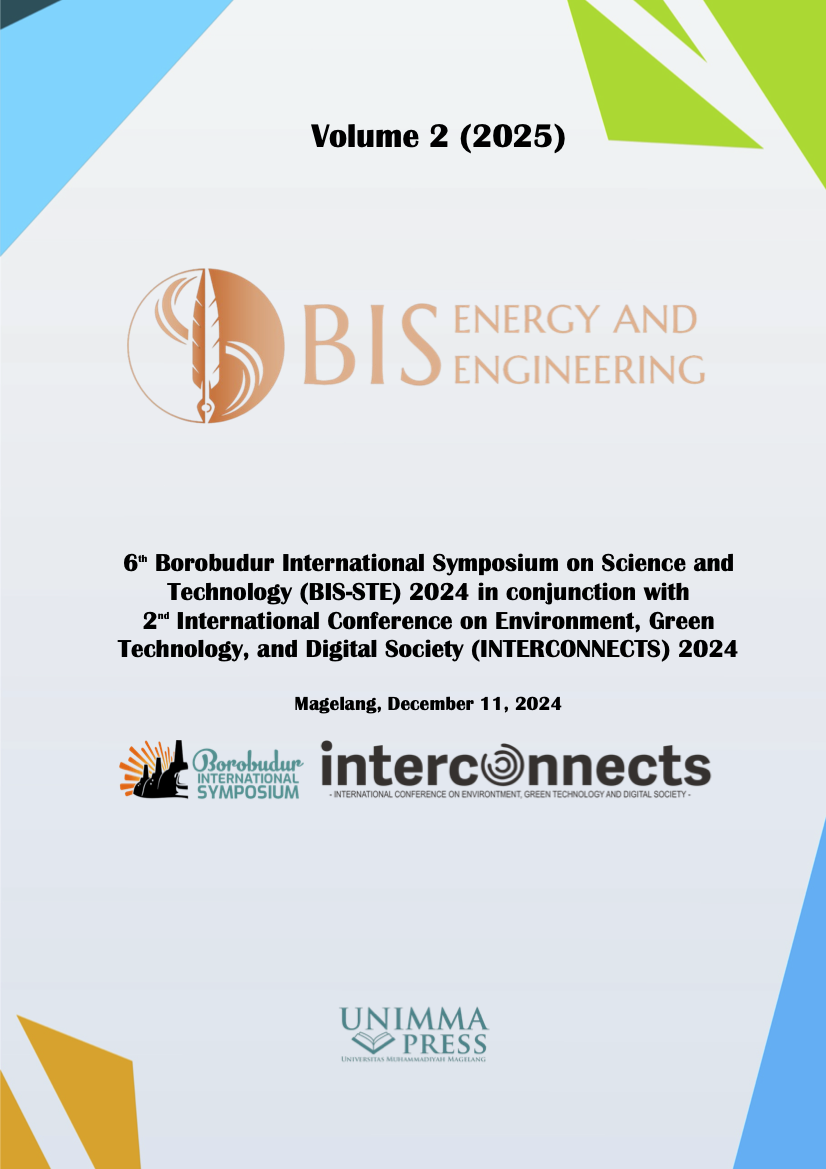Energy efficiency in sustainable buildings: implementation of green design and technology in Karawang Regency
Keywords:
Energy efficiency, Sustainable buildings, Green design, TechnologyAbstract
Energy efficiency in sustainable buildings is a strategic approach to support environmentally friendly development and contribute to climate change mitigation. This study examines the implementation of green design and technology to enhance energy efficiency in buildings located in Karawang Regency, Indonesia. The research focuses on technologies such as energy-efficient lighting systems, thermal insulation materials, and optimized natural ventilation in building construction. A mixed-methods approach was employed, combining qualitative and quantitative analyses. Data were collected through field surveys, interviews with developers, and document reviews on the application of green technologies. The findings indicate that the integration of green design and technology can reduce energy consumption by up to 25% compared to conventional buildings. Additionally, public awareness and local government policy support play critical roles in the success of these initiatives. However, the study also identifies challenges, including the high initial cost of green technologies and limited public understanding of energy efficiency’s importance. Recommendations include strengthening stakeholder collaboration, providing incentives for adopting green technologies, and raising public awareness about the significance of sustainable development. This research provides valuable insights for policymakers, urban planners, and civil engineers in designing buildings that are both energy-efficient and sustainable. The findings contribute to the broader discourse on integrating green technology into sustainable infrastructure development globally.
References
1. Rizki, R. Pengaruh Efisiensi Energi Dan Air Pada Bangunan Dalam Penerapan Eco-Green. Sinektika J. Arsit. 2022, 19, 120–128, doi:10.23917/sinektika.v19i2.17059.
2. CAHYANINGRUM, H.K.; Implementasi Prinsip Desain Arsitektur Bioklimatik Pada Bangunan Perpustakaan Di Klaten. Arsitektura 2017, 15, 434, doi:10.20961/arst.v15i2.12580.
3. Diniari, A.; Wijayaningtyas, M.; Hidayat, S. Analisis Kriteria Bangunan Hijau Berdasarkan Greenship Homes V.1.0 Pada Perumahan Di Kota Malang. Infomanpro 2021, 10, 19–26.
4. Widiati, I.R. Tinjauan Studi Analisis Komparatif Bangunan Hijau (Green Building) Dengan Metode Asesmen Sebagai Upaya Mitigasi Untuk Pembangunan Konstruksi Yang Berkelanjutan. Pros. Konf. Nas. Pascasarj. Tek. Sipil X 2019 2019, 69–76.
5. Imran, M. Material Konstruksi Ramah Lingkungan. Radial 2019, 6, 373.
6. Hapsari, O.E. G Reen B Uilding : H Ome R Emodeling G Uidelines. Al-Ard J. Tek. Lingkung. 2018, 3, 54–61.
7. Ananda Muhamad Tri Utama No 主観的健康感を中心とした在宅高齢者における 健康関連指標に関する共分散構造分析Title. 2022, 9, 356–363.
8. Ningrum, D.; Damayanti, F. Kajian Sistem Struktur Dan Teknologi Hijau. Semin. Nas. Infrastruktur Berkelanjutan 2019Era Revolusi Ind. 4.0 Tek. Sipil dan Perenc. 2019, 75–80.
9. Building, G.; In, C.; Kasa, S.; Design, H. Konsep Bangunan Hijau Pada Desain Perumahan Suta Kasa Tangerang. 2024, 1, 100–107, doi:10.32315/JDLBI.v1i2.396.
10. Lingkungan, R.; Perkotaan, D.I. Penerapan Prinsip Arsitektur Hijau Pada Desain Permukiman Ramah Lingkungan Di Perkotaan. 2021, 618–632.
Downloads
Published
Conference Proceedings Volume
Section
License

This work is licensed under a Creative Commons Attribution-NonCommercial 4.0 International License.

